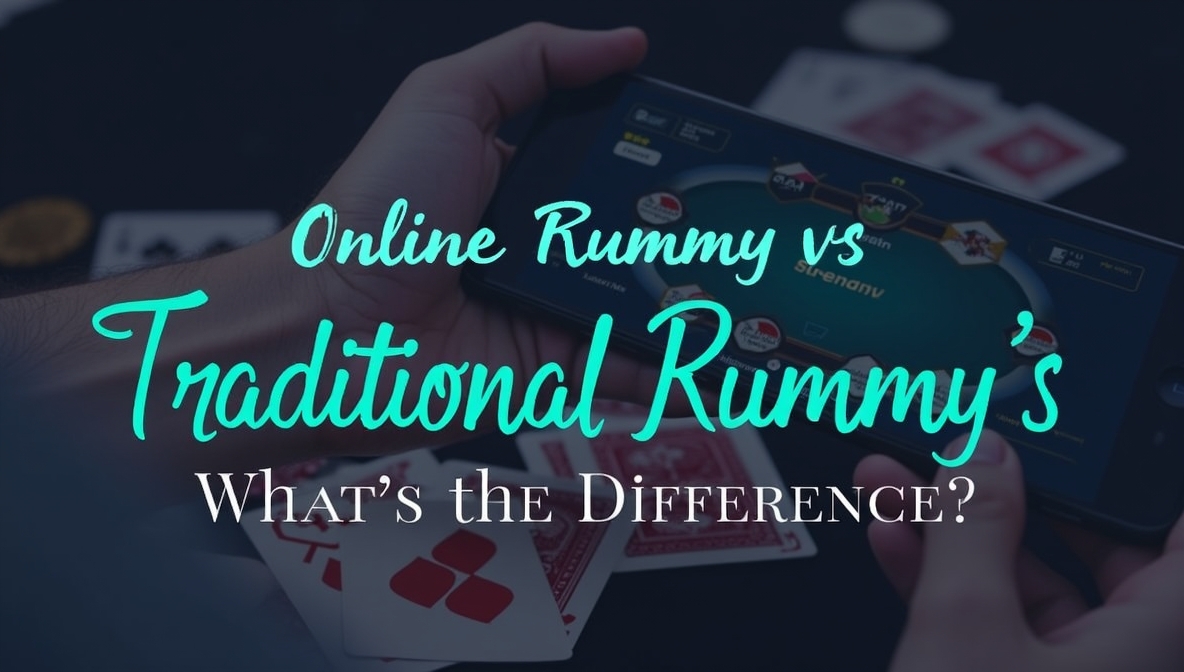
Rummy, a beloved card game in India, has evolved significantly by 2025, with online rummy challenging the dominance of traditional rummy. As of now, both formats offer unique experiences, catering to different preferences. This guide from Online Rummy Guide explores the key differences between online and traditional rummy, helping Indian players decide which suits them best.
The Basics of Rummy
Rummy involves forming sequences and sets with 13 cards, using skill to outmaneuver opponents. Traditional rummy, played with physical cards, has been a family staple for generations. Online rummy, digitized on platforms like Junglee Rummy and RummyCircle, replicates this with virtual cards and real-time opponents. Both follow variants like Indian Rummy, Points Rummy, and Pool Rummy, but their delivery and features diverge.
Key Differences in 2025
1. Accessibility and Convenience
Traditional rummy requires a physical deck, a group of players, and a suitable location, often limiting play to weekends or gatherings. Online rummy, accessible via smartphones or laptops, lets you play 24/7 from anywhere with internet. In 2025, 5G networks enhance this convenience, reducing lag and enabling seamless gameplay on the go.
2. Game Setup and Speed
Setting up traditional rummy involves shuffling cards and agreeing on rules, which can take time. Online platforms automate dealing with RNG (Random Number Generator) certification, ensuring fairness and speeding up the process. Games like Points Rummy conclude in minutes, while traditional sessions may last hours depending on player count.
3. Opponents and Social Interaction
Traditional rummy fosters face-to-face interaction with family or friends, adding a social element. Online rummy connects you with global or Indian players, often anonymously, via platforms like RummyCulture. Live chat features mimic social vibes, but the lack of physical presence alters the experience.
4. Cost and Stakes
Traditional rummy uses pennies or small cash, with stakes agreed informally. Online rummy offers micro-stakes (₹0.10 per point) to high-roller tables (₹1,000+), plus free practice games. Welcome bonuses, like 100% up to ₹5,000 on Junglee Rummy, reduce initial costs, attracting new players.
5. Technology and Features
Online rummy in 2025 leverages AI for strategy tips, VR for immersive tables, and live dealer options for a casino feel. Traditional rummy relies on manual skill, with no technological aids. Online platforms also provide tutorials, stats, and auto-sort features, enhancing learning curves.
6. Legal and Safety Aspects
Traditional rummy, played privately, faces no legal scrutiny in India under the Public Gambling Act of 1867, as it’s skill-based. Online rummy, hosted on licensed sites, is legal in most states but banned in places like Telangana. SSL encryption and RNG audits ensure online security, unlike the informal nature of traditional games.
7. Tournament Opportunities
Online rummy offers daily tournaments with cash prizes, from ₹1,000 to lakhs, accessible via apps. Traditional rummy lacks structured events unless organized locally, limiting competitive scope. In 2025, online platforms host global leaderboards, boosting prestige.
Pros and Cons
Online Rummy
- Pros: Convenience, variety of stakes, bonuses, global opponents, tech enhancements.
- Cons: Requires internet, potential addiction risks, legal gray areas in some states.
Traditional Rummy
- Pros: Social bonding, no tech dependency, no legal concerns.
- Cons: Limited accessibility, slower pace, no cash rewards.
Which is Better in 2025?
The choice depends on your lifestyle. Busy professionals or students prefer online rummy for its flexibility and cash potential. Families or those valuing personal interaction lean toward traditional rummy. In 2025, online rummy’s growth, with 150 million players projected in India, reflects its appeal, driven by mobile penetration and 5G adoption.
Getting Started with Online Rummy
To begin, select a licensed platform, register with an email and phone number, and deposit via UPI or Paytm (minimum ₹50-₹100). Use demo modes to practice, then join cash games. Leverage bonuses and set deposit limits for responsible play, supported by GamCare.
Technology Impact in 2025
Online rummy platforms now offer AI-driven move suggestions and VR tables for a lifelike experience. Live dealer rummy, where you play with a real dealer, adds excitement. Traditional rummy remains unchanged, relying on physical skill, making it nostalgic but less innovative.
Tips for Both Formats
- Learn Rules: Master sequences and sets regardless of format.
- Practice: Use online demos or traditional practice sessions.
- Stay Focused: Avoid distractions to maintain strategy.
- Manage Bankroll: Set budgets to enjoy sustainably.
Why Trust Online Rummy Guide?
Online Rummy Guide provides expert insights into both rummy formats, offering reviews, strategies, and safety tips for Indian players. Our 2025 updates ensure you’re equipped to choose wisely.
Conclusion
Online rummy vs. traditional rummy in 2025 highlights a clash of convenience and tradition. Online offers tech-driven advantages, cash rewards, and global play, while traditional rummy preserves social charm and simplicity. Whether you opt for the digital thrill or classic gathering, Online Rummy Guide helps you master both. Start your rummy journey today and decide which format fits your 2025 gaming style!





Leave a Reply